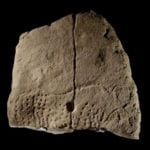 Misconceptions
Misconceptions  Misconceptions
Misconceptions  History
History 10 Amazing Roman Epitaphs
 Weird Stuff
Weird Stuff 10 Niche Subcultures That Are More Popular Than You Might Think
 Mysteries
Mysteries 10 Tragic Disappearances and Deaths in Joshua Tree National Park
 History
History 10 Ways Childhood Really Sucked in the Old West
 Music
Music 10 Name Origins of Famous Bands from the 1990s
 Religion
Religion 10 Biggest Turnarounds by the Catholic Church
 Weird Stuff
Weird Stuff 10 Unbelievable Times Laws Had Unintended Consequences
 Humans
Humans Ten Historic Women Who Deserve Way More Credit Than They Got
 Movies and TV
Movies and TV 10 Films That Spawned Major Lawsuits
 Misconceptions
Misconceptions 10 Phony Myths and Urban Legends That Just Won’t Die
 History
History 10 Amazing Roman Epitaphs
 Weird Stuff
Weird Stuff 10 Niche Subcultures That Are More Popular Than You Might Think
Who's Behind Listverse?

Jamie Frater
Head Editor
Jamie founded Listverse due to an insatiable desire to share fascinating, obscure, and bizarre facts. He has been a guest speaker on numerous national radio and television stations and is a five time published author.
More About Us Mysteries
Mysteries 10 Tragic Disappearances and Deaths in Joshua Tree National Park
 History
History 10 Ways Childhood Really Sucked in the Old West
 Music
Music 10 Name Origins of Famous Bands from the 1990s
 Religion
Religion 10 Biggest Turnarounds by the Catholic Church
 Weird Stuff
Weird Stuff 10 Unbelievable Times Laws Had Unintended Consequences
 Humans
Humans Ten Historic Women Who Deserve Way More Credit Than They Got
 Movies and TV
Movies and TV 10 Films That Spawned Major Lawsuits
10 More Archaeological Discoveries Made Possible By Global Warming
As we examined in a previous list, there is one positive side to the melting of glaciers and other areas that were once permanently frozen. The retreating ice is exposing long-buried objects—many with priceless historical significance—that have been well preserved by the ice for decades, or even thousands of years.
But once these items are released from their icy tombs and are exposed to the elements, they rapidly decay and disappear. Scientists and archaeologists around the world are racing against time to find these emerging artifacts before they are lost. Here are 10 more archaeological discoveries made possible by global warming.
10A 30,000-Year-Old Giant Virus

Inspired by scientists who had been able to regrow wildflowers from 30,000-year-old seeds, two French biologists, Jean-Michel Claverie and Chantal Abergel, wondered if they could do the same with a virus. In what can only be described as science fiction, they not only brought back a frozen 30,000-year-old virus, but the virus was still infectious. Fortunately for us, this virus infected amoebae, not humans. The virus was also huge, almost the size of a bacterium. Even more puzzling, the virus attacked the host in a manner different from most viruses, and it was mostly empty, despite its giant size. This is odd, since viruses typically pack as much genetic material in as small a space as possible.
But what if this resurrected virus had been infectious to humans? A virus no human had been exposed to for 30 centuries? Could such a virus kill millions who had no natural resistance to it? Sounds crazy, but as more and more glaciers melt, they unlock all manner of long-frozen organic matter. There is simply no telling what might emerge. This is especially concerning as the northern poles melt. People will soon be inhabiting areas like Greenland that have been frozen for centuries. What will they disturb when they begin drilling and mining?
9Ancient Moss
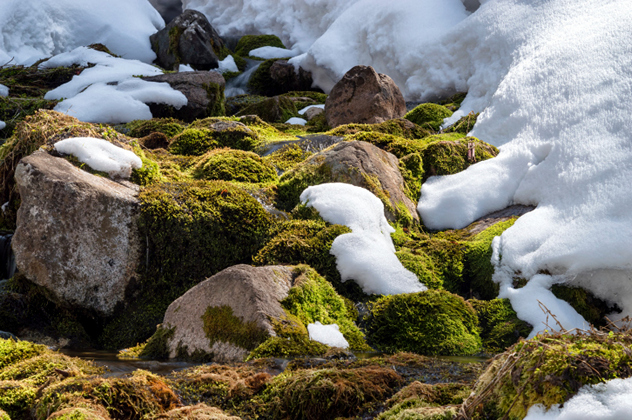
Around 500 years ago, far in the Arctic region on Ellesmere Island, Nunavut, approaching glaciers covered some moss and lichens. These simple plants were then buried under tons of ice for hundreds of years . . . until recently, when the ice melted and they emerged.
The scientists who saw these plants growing out of what appeared to be the melting ice thought to themselves: “Could the plants be alive?” Some of the plants appeared brown and dead, but others were growing new, green stems. The scientists took samples of these plants back to their lab to see if the moss was still viable. The scientists simply placed the moss in potting soil—like you would geraniums—and waited to see what would happen.
To their amazement, they were able to successfully regenerate the moss and create new growth. Even buried under ice for hundreds of years, these plants remained alive and viable. The implications to scientists are obvious—if the glaciers melt and expose enough of these long-dormant plants, they could recolonize northern climates.
8World War I Soldiers And Weapons
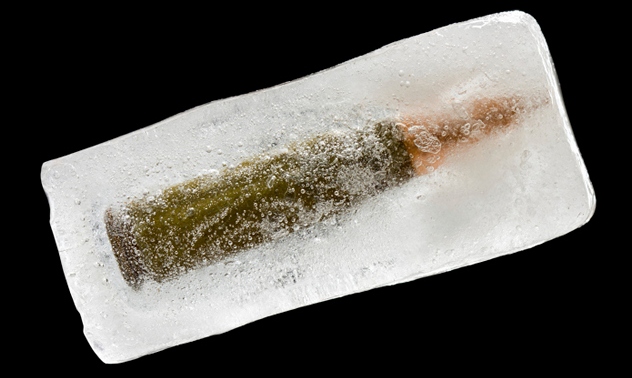
During World War I, the northern region of Italy near the Austrian border was the scene of heated fighting between Italian forces and Austro-Hungarian soldiers, in what became known as “The White War.” At the time, it was one of the most remote and formidable battlefields of that war. Today, melting glaciers are giving up the dead and the weapons used by soldiers who fought in the Alps.
In 2003, over 200 World War I munitions emerged from the melting ice, at the altitude of three kilometers (10,000 ft) in the Trentino region of northern Italy. The soldiers had apparently dug a munitions cache into the glacier to store the explosives. When the glacier melted, the munitions, weighing 10 kilograms (22 lb) each, were found on the ground, stacked on top of each other. The soldiers are being discovered too, still locked in battle, frozen together where they died. At first, their personal artifacts emerged from the ice: diaries, bits of clothing, letters. Now, the Italian and Austrian troops who fought each other and died are themselves emerging from the ice, thawing out, returning to the world of sunlight. They are well-preserved reminders of a war fought only 100 years ago—a war that was supposed to end all wars.
7Roman Artifacts
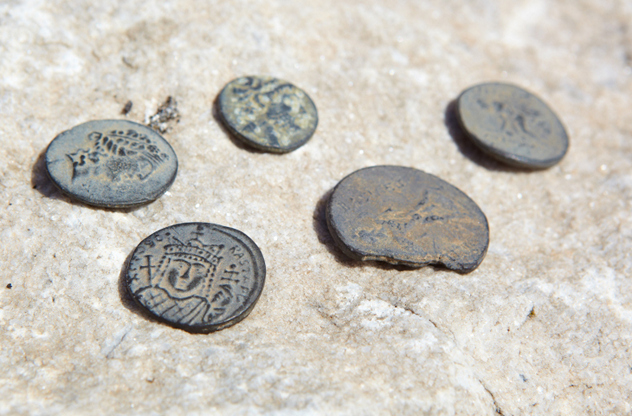
The Schnidejoch pass is a route through the Alpine Mountains of Europe. The route—linking two Alpine valleys—has been used for centuries by travelers passing from Italy to the north. Scientists believe European ancestors have been traveling the Schnidejoch pass for 6,000 years. Because humans have used this pass for so long, they have left behind thousands of years of trash. This trash, thanks to the melting glaciers in and around the Schnidejoch, is now turning into priceless scientific artifacts from antiquity.
The objects that are recovered tend to cluster into distinct time periods. Scientists believe the objects correspond to time periods when the pass was open and people were using it. One such period produced artifacts associated with the Roman Empire, about 1,800 years ago. The discoveries include a belt used for a Roman tunic, Roman shoe nails, cloak pins, and coins. Scientists also believe the ruins located only a few miles from the Schnidejoch pass may be a Roman settlement or outpost. Taken together, these distinct time periods of artifact discoveries show how advancing and retreating glaciers would open and close the pass to travelers. Looking at the recovered coins, it is hard not to imagine a Roman soldier, far away from the warm Mediterranean climate of Italy, dropping the coin while traveling from Italy to England or Germany.
6Bronze Age Leather Shoe
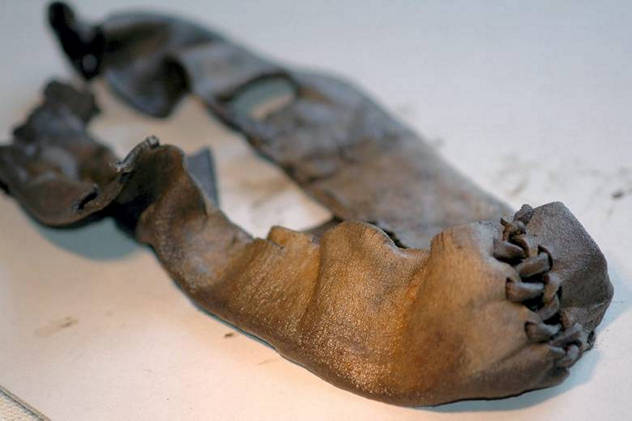
In 2006, an amazing discovery emerged from the Lendbreen ice patch in Norway. A wood worker and amateur archaeologist came across an amazingly well-preserved ancient leather shoe. When the shoe was examined and tested, archaeologists were stunned. The shoe was over 3,000 years old and dated from the time of Otzi the Iceman—the Bronze Age man found in 1991 in the mountains of northern Italy.
Leather objects are excellent markers for the age of a glacier. When the ice melts, leather objects are exposed to the elements and quickly disintegrate. Therefore, when scientists discover ancient leather objects, they know the ice could not have retreated prior to the age of the leather, making the glacier at least as old. The shoe was made of tanned leather and is about a size 7 (size 39 in Europe). It is one of the oldest shoes ever found in the world and the oldest shoe ever discovered in Norway.
5An Iron Age Horse
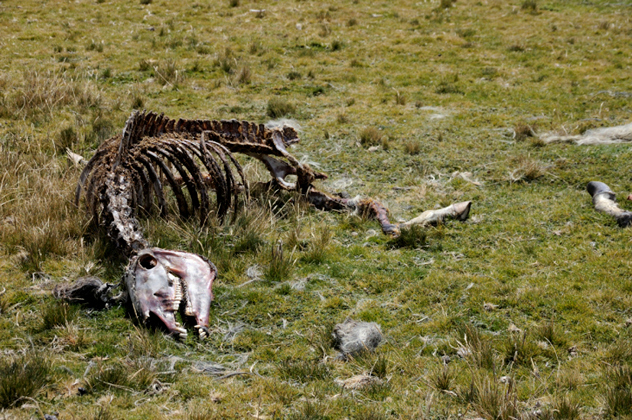
The Lendbreen glacier near Lillehammer, Norway has produced many amazing discoveries of well-preserved archaeological artifacts. Previously, scientists had discovered well-preserved horse manure at high altitudes, where usually they would only find well-preserved reindeer poop. They had also found 1,000-year-old horseshoes. The scientists reasoned that where there is horse poop and horseshoes there must have been horses.
In August 2013, they finally found one of the horses (the first time scientists have discovered the remains of an ancient horse at such a high altitude). The horse was small, similar to those found in Iceland. The scientists theorize the horse broke its leg and was killed on the spot. Scientists now know that people from this time period were using horses for transportation. They theorize the reindeer hunters used horses to transport reindeer carcasses down from the mountains to the villages below. If you can read Norwegian, here is the link to the original article.
4Ancient Forests
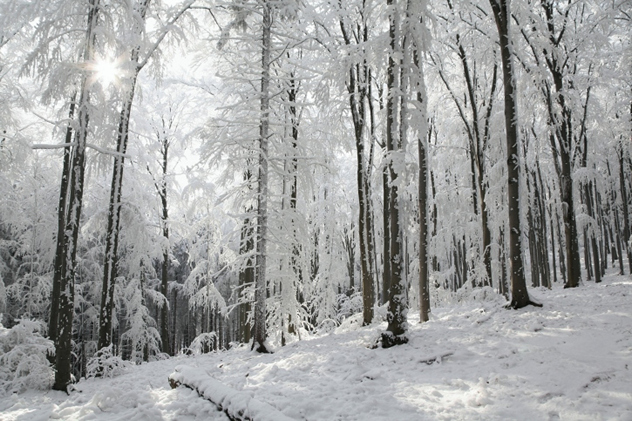
About 2,000 years ago, the Mendenhall Glacier slowly approached a hemlock and spruce forest in what is today Juneau, Alaska. Ahead of the glacier came glacial melt—ice water pushing tons of gravel. The gravel slowly engulfed the trees, snapping off branches but leaving the trees themselves standing and rooted to the ground. Eventually, the gravel covered most of the trees and acted as a sort of shock absorber as the glacier itself slowly crept up and over the forest.
The weight of the ice and the grinding pressure of the glacier would normally have crushed the trees. But the gravel protected the forest, and today, as the glacier thaws, it is reappearing, much of it still standing. Not only are the trees standing and intact, many have their bark. This allows scientists to study the trees as they lived and better estimate their age. One tree was dated at 2,350 years old.
3William Holland And Jonathon Conville
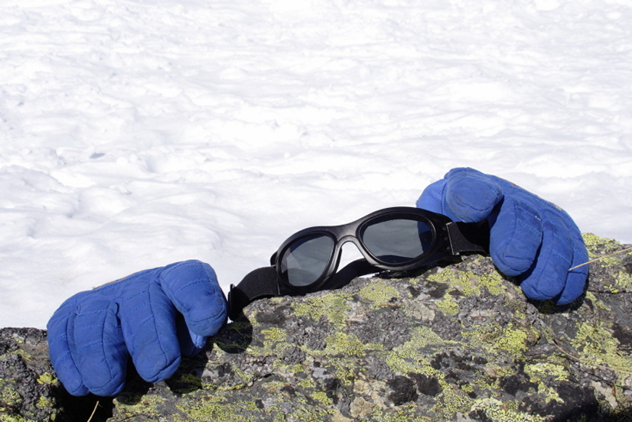
Ancient hunters and climbers are not the only bodies emerging from the melting glaciers of the world. Trapped for decades or centuries, the glacier ice protects and then releases the bodies it holds, regardless of who they were or when they died. Two recently discovered bodies demonstrate the power of glaciers to take away the life of loved ones and still, many years later, bring some closure to those left behind.
In 1979, Jonathon Conville was turning his life around. A former British paratrooper, he had embraced the outdoors. One of his challenges was to climb the famous Matterhorn in the Alps of Switzerland. But during the ascent, he and his climbing partner were trapped by a storm on the north face of the mountain. Conville disappeared, and his partner was rescued by a helicopter. Over 30 years later, another rescue helicopter pilot would observe something that didn’t belong on the glacier. Near the edge of the glacier, where it was melting, he saw what looked like human remains. A search party found some climbing gear and clothing. A tag on the clothing said “Conville.” The pathologist who examined the remains tracked down Conville’s living relatives to inform them he had been found. His sister was able to reclaim the body and clutch the hand of her long lost brother one more time.
In 2010, on the other side of the planet in Canada, a different melting glacier would release another long lost climber. This time, it was an American named William Holland. In April 1989, Holland had gone missing while hiking a dangerous frozen waterfall on a mountain called Snow Dome. Like Conville, Holland died while his climbing partners survived. In Holland’s case, he went too close to the edge of a frozen precipice, which broke away. He fell 305 meters (1,000 ft) to his death. By the time a recovery party could get to him, an avalanche had buried his body. When he was found by hikers in 2010, the melting glacier had so well preserved him that his climbing rope was still wrapped around his body.
2Iron Age Tunic

Have you ever taken off your jacket in a movie theater, laid it on the chair next to you, and left it behind? Sometime around A.D. 300, at the Lendbreen glacier in Norway, somebody took off their kyrtel (a kind of tunic), laid it down, and left it. At least that is what scientists think happened, though it makes no sense for someone to leave behind their version of a parka in such a cold place.
Maybe it was a rare warm, sunny day along the hunting paths on the glacier, and the owner took it off to soak up some rays and forgot where they left it? Or perhaps the owner was in the last stages of hypothermia and suffered the strange phenomenon called “paradoxical undressing“? Paradoxical undressing occurs when the person suddenly feels a rush of warmth, just before they freeze to death and removes their clothing. Did the owner of the tunic meet this fate at the glacier?
Regardless of how it become lost, the kyrtel was discovered in a melting ice patch, remarkably well preserved for being 1,700 years old. Worn over the head, like an Iron Age hoodie, it would have fit a person approximately 175 centimeters (5’9”) tall. It was made from wool of an adult sheep and softer wool from a lamb. The two different wools, each with a different shade of color, were woven in a style that was probably all the rage in Iron Age Europe. The tunic was patched twice by its user, perhaps making it easier to identify. If you think you may have lost this tunic and wish to reclaim it, here is a good photo for identification purposes.
1Theodul Pass Man
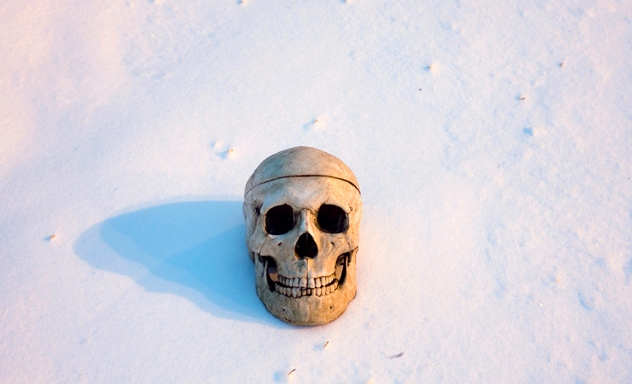
Most people have heard of Otzi, the amazingly well-preserved Copper Age man, who lived sometime between 3500-3100 B.C. The 1991 discovery of this ancient man, thousands of feet up in the Alpine Mountains, and the mystery of who he was and how he lived and died is still being researched by scientists over 20 years later. Less well known, however, is the 16th-century man known as “Theodul Pass Man.” Although not nearly as ancient as Otzi, Theodul Pass Man has his own enigmatic and interesting story to tell.
It all started in 1985, when a ski teacher, Annemarie Julen-Lehner, was hiking near the Theodul Glacier in Switzerland—a region known to the locals as “Lichenbretter” or “corpse slab.” This accurately describes the huge, ever-moving glacier and the bodies it sometimes gives up. The Theodul Pass is a dangerous, 3,35-kilometer (11,000 ft) high shortcut across the mountains, for those wishing to travel from Switzerland to Italy. The glacier is filled with hidden crevasses, so the time saved by avoiding the valley passages could cost a traveler his life. This is apparently what happened to Theodul Pass Man.
Ms. Julen-Lehner found bones emerging from the ice and took them to her brother, who was a biologist. He immediately recognized the significance of her find. The bones turned out to be from a human and a mule. Although the glacier ice usually preserves the bodies, the bones indicated the remains had been exposed to the sun and deteriorated at some point in time. Eventually, Annemarie and her brother found more than just bones and were able to recover pieces of the man’s skull and even bits of his brain.
Over the next four years, the brother and sister team, as well as archaeologists, would recover tantalizing clues as to the identity of the Theodul Pass Man. Found with the body were remains of his clothing and shoes. He was well armed for the journey. He carried a flint pistol, a dagger still in its sheath, and a sword with a German blacksmith’s mark. Also, he was wearing a silver amulet engraved with a cross and carrying a cup engraved with the initials “H.A.” But the most significant discovery was the 90 plus copper and silver coins he was carrying, which dated his remains to the last decade of the 1500s.
Until the discovery of the coins, archaeologists believed they may have found Anton Fux, a local man who had vanished in the glacier in 1584. But the coins dated from 1585 and later, so it could not have been the body of Fux. The coins showed Theodul Pass Man died sometime after 1588 and contained further clues as to where he came from. The coins depicted the image of Philip II of Habsburg, who ruled Spain and northern Italy at that time. It is likely the Theodul Pass Man was of Italian or Spanish descent, traveling north along the pass when tragedy struck.
Taken together, it seems the Theodul Pass Man was possibly an Italian mercenary traveling from Italy to Switzerland. Riding his mule, he probably fell into a crevasse and died. There, he and the mule were exposed to the elements for many years, until the Little Ice Age took over Europe in the next century, locking the remains in the glacier. Over 400 years later, as the glacier retreated, this man, his mule, and his possessions were rediscovered.
Patrick Weidinger’s European ancestors came from the area of Northern Italy, Switzerland, and Southern Germany. Thus, it is possible he could be related to Otzi the Copper Age man discovered in 1991. We now know Otzi has at least 19 living relatives in Europe.






